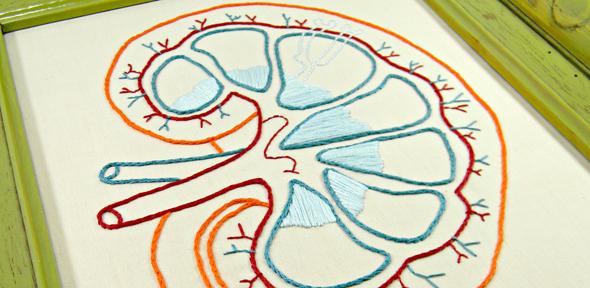
A new study published in Nature suggests that the stem cells that allow our organs to grow “know” their own sexual identity, and this influences how they function. These findings could explain why the prevalence of some diseases, such as certain cancers, differs between the sexes.
Beyond the obvious reproduction-related anatomical differences between males and females, many other organs also show sex specific characteristics, for example in the form of subtle differences in size or in their susceptibility to disease. The effect of hormones has been extensively researched, and can explain many of the differences. However, less is known about the potential impact of differences between the cells that created the organs themselves.
The researchers found important genetic differences at the cellular level and also demonstrated how these differences impact organ growth, independently of circulating hormones. These findings could shed light on why some diseases prevail in men or women.
Regenerating gut cells
To uncover genes that regulate cellular differences between male and female organs, the group, led by Irene Miguel-Aliaga studied intestines of fruit flies. Fruit flies are good experimental systems to investigate gene function and, importantly, they exhibit clear sex-related traits such as body size (females are larger than males) and differences in gut physiology.

The researchers hypothesised that the differences in size and gut physiology between the sexes might be due to intrinsic genetic differences at the cellular level. By monitoring the degree to which different genes were activated in both sexes, the researchers found that subgroups of genes regulating gut function were activated differently in male and female flies. This suggested that “sex-determination” genes (genes that are active due to sex chromosomes) inside gut cells were affecting organ function.
Gut cells are continuously regenerated by gut stem cells through cell division, in which the parent stem cell typically divides into a stem cell plus a specialised cell which will no longer divide but performs functions of the gut. Several mechanisms adjust stem cell divisions to suit the needs of the tissue (for example, if the gut is damaged, stem cells produce more cells to enable tissue regeneration).
By manipulating genes in the cells to act as more “male” or more “female” the authors demonstrated that sex-determinants endowed “female” intestinal stem cells with better ability to divide. This increased stem cell division resulted in longer and better regenerating female guts compared to male guts. Suppressing this “sex-determination path” specifically in intestinal stem cells of a female fly caused the gut to resemble that of a male fly, and activating it in intestinal stem cells of a male caused its gut to increase in size to that of a normal female fly. Further experiments identified additional links between sex-determinants and cell growth, providing a more complete picture.
Advantages and disadvantages
Higher rates of cell multiplication can have advantages for an organ, in that it can speed up the rate of repair after injury. In the female flies it improves nutrient absorption to accommodate high nutritional demands linked to reproduction. However, higher proliferation also leads to more rapid ageing, and higher vulnerability to tumours. Consistent with this view, the study showed that female flies were more prone to genetically-induced intestinal tumours than males; moreover, the researchers were able to confirm that suppressing the “feminising genes” reduced the ease with which tumours form in the gut of female fruit flies.
The researchers therefore showed how sex-determining genes in stem cells can control organ function, independently of external hormone influences. This had consequences on organ size and also optimised reproduction in females but came with the risk of increased susceptibility to tumours.
The findings have broad implications in the way we understand tissue maintenance, disease and ageing. Future work will be needed to investigate if the mechanisms discovered in the fruit flies' intestines are also seen in other tissues, and if they are applicable in mammals. If this is the case (which is considered probable), sex-related differences may affect how cells respond to treatments and so by understanding these differences we might be able to develop more effective therapies.
Golnar Kolahgar, The Gurdon Institute, Postdoctoral research associate, University of Cambridge
This article was originally published on The Conversation. Read the original article.
The opinions expressed in this article are those of the individual author(s) and do not represent the views of the University of Cambridge.
Inset image: Drosophila immigrans face (John Tann).
Golnar Kolahgar (Gurdon Institute) discusses the suggestion that the stem cells which allow our organs to grow “know” their own sexual identity.

The text in this work is licensed under a Creative Commons Attribution 4.0 International License. For image use please see separate credits above.